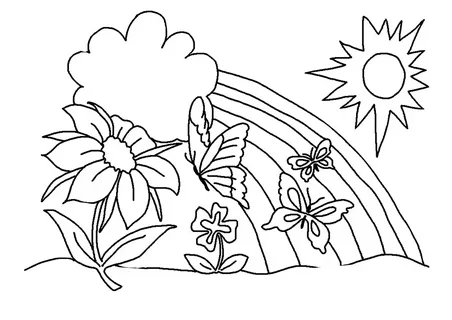Coloring pages are often seen as a simple pastime for children, but they offer much more than just entertainment. Engaging in coloring activities can be a powerful tool for developing patience and concentration in kids. These fundamental cognitive skills are crucial for academic success and everyday functioning. In this comprehensive guide, we will explore how coloring pages can foster patience and concentration, and provide practical tips for parents and educators to maximize these benefits.
Before diving into how coloring pages contribute to these skills, it’s important to understand what patience and concentration entail:
Understanding Patience and Concentration
Table of Contents
Toggle- Patience: Patience is the ability to remain calm and persistent when faced with delays, difficulties, or long-term tasks. It involves waiting for outcomes without frustration and persevering through challenges.
- Concentration: Concentration refers to the ability to focus mental effort on a specific task or activity. It involves maintaining attention and resisting distractions to achieve a goal.
How Coloring Pages Foster Patience
Coloring pages for kids offer several opportunities for children to practice and develop patience:1. Time-Consuming Tasks
Coloring is inherently a time-consuming activity. Unlike many other activities that may offer immediate gratification, coloring requires children to spend a considerable amount of time on a single page. This extended period of focus helps children learn to be patient and appreciate the process of completing a task.- Completion of the Page: To see the finished result, children must commit to working on the coloring page over time. This process teaches them that patience is necessary to achieve a satisfying outcome.
- Attention to Detail: As children color intricate designs, they must focus on small areas and details. This attention to detail requires them to slow down and work carefully, reinforcing the value of patience.
2. Managing Frustration
During coloring, children may encounter challenges such as staying within the lines or choosing the right colors. These moments of frustration provide opportunities for them to practice patience.- Problem-Solving: When children struggle with a coloring page, they learn to problem-solve and persist until they find a solution. This experience builds resilience and patience.
- Emotional Regulation: Learning to manage frustration during coloring helps children develop emotional regulation skills. They learn to stay calm and focused, even when things don’t go as planned.
3. Setting and Achieving Goals
Coloring pages often involve setting small goals, such as finishing a specific section or completing the entire page. Achieving these goals requires patience and persistence.- Goal-Oriented Approach: Children learn to set achievable goals and work steadily towards them. This process reinforces the idea that patience is necessary to reach long-term objectives.
- Sense of Accomplishment: Completing a coloring page provides a sense of accomplishment and reinforces the value of patience. Children experience the reward of seeing their efforts materialize into a finished product.
How Coloring Pages Enhance Concentration
Coloring pages are also effective in improving concentration through various mechanisms:1. Focused Attention
Coloring requires children to focus their attention on a specific task. This focus helps them practice concentrating on one activity at a time.- Minimizing Distractions: When children are engrossed in coloring, they are less likely to be distracted by external stimuli. This focused attention helps improve their ability to concentrate on other tasks.
- Sustained Engagement: The process of coloring engages children for an extended period, promoting sustained attention. This practice helps build the ability to concentrate on longer tasks, such as reading or completing school assignments.
2. Following Directions
Many coloring pages come with specific instructions, such as using certain colors or staying within the lines. Following these directions requires concentration and adherence to guidelines.- Attention to Instructions: Children learn to pay attention to instructions and follow them accurately. This skill is transferable to other areas where following directions is essential.
- Detail Orientation: Concentrating on staying within the lines and filling in detailed areas of the page helps children develop attention to detail. This skill is important for academic tasks and everyday activities.
3. Improving Visual Processing
Coloring involves visual processing, which is the ability to interpret and respond to visual information. This skill is closely related to concentration and helps children stay focused on the task.- Visual Discrimination: Coloring helps children develop visual discrimination, which is the ability to differentiate between colors, shapes, and patterns. This skill enhances their ability to concentrate on visual details.
- Hand-Eye Coordination: Coordinating hand movements with visual input during coloring strengthens hand-eye coordination. This coordination is crucial for maintaining concentration in various activities.
Practical Tips for Parents and Educators
To maximize the benefits of coloring pages for developing patience and concentration, parents and educators can implement the following strategies:1. Provide a Variety of Coloring Pages
Offering a range of coloring pages with different themes, designs, and levels of complexity can keep children engaged and motivated.- Themed Pages: Provide coloring pages featuring favorite characters, animals, or nature scenes to maintain interest.
- Complexity Levels: Offer pages with varying levels of detail to match the child’s skill level and provide appropriate challenges.
2. Create a Comfortable Coloring Environment
A well-organized and comfortable coloring space can enhance focus and concentration.- Quiet Space: Designate a quiet area for coloring where children can work without distractions.
- Proper Lighting: Ensure that the coloring area is well-lit to reduce eye strain and help children see details clearly.
3. Encourage Regular Coloring Sessions
Incorporating coloring into the daily or weekly routine can help children build patience and concentration over time.- Consistent Schedule: Set aside regular time for coloring activities to establish a routine and reinforce the practice of patience and focus.
- Short Sessions: Start with shorter coloring sessions and gradually increase the time as children become more comfortable with maintaining concentration.


